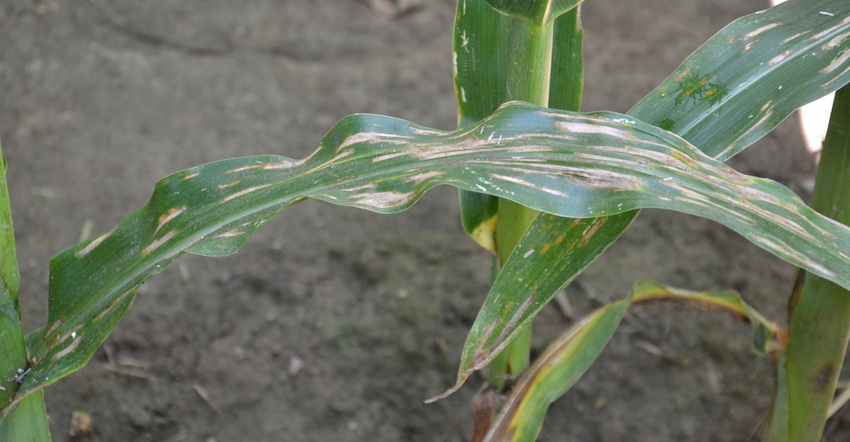
There are ways to identify diseases without sending leaf samples to a laboratory. Chances are you can make your own identification using the Purdue University Extension Corn & Soybean Field Guide, or the app versions of the guide, available at minimal cost from your app store.
You can also take pictures and text them to specialists. And now, thanks to a new tool introduced by Corteva Agriscience that uses artificial intelligence, you may get an accurate identification right in the field.
So when would you still pull physical leaf samples? When you know there is a new disease confirmed in the next state over, and the lesions seem too “classic” to just be ordinary gray leaf spot.
Decision to pull leaves
We were scouting a cornfield, and Dave Nanda examined each leaf carefully. He is director of genetics for Seed Genetics Direct, based near Jeffersonville, Ohio. The corn was in the early stages of grain fill, so there was still a lot at stake.
“I acknowledge that the lesions on lower leaves are a bit long, but it’s still the classic rectangular shape of gray leaf spot,” Nanda told me. “I am confident we’re just dealing with gray leaf spot. We need to let the farmer know so he can spray as soon as possible.”
I agreed with the need to spray, but I still wasn’t convinced this was gray leaf spot. After all, Nanda was the one who first clued me in to the discovery of bacterial leaf streak, a new foliar disease, in Illinois earlier this year. To our knowledge, it hasn’t been confirmed in Indiana. However, a past experience didn’t help my uncertainty.
In 2019, I printed an identification of an oddball disease in soybeans based on an agronomist’s identification, only to find out that more than just farmers read our website and magazine. A Purdue pathologist was concerned because the disease I reported on hadn’t been officially confirmed in Indiana. If another country’s trading delegation saw our report, he was concerned they might use it as leverage to balk at Indiana soybeans. In that case, we hadn’t sent the sample in for confirmation.
Quick disease ID
I pulled several corn leaves showing intense lesions, placed them in a plastic bag, and shipped them to the Purdue Plant and Pest Diagnostic Laboratory. Directions for finding the proper form and sending samples are on Page 5 of the 2020 Purdue field guide. I found the form at ppdl.purdue.edu, included an $11 check for a routine sample, and sent everything on its way.
Fewer than 48 hours later, I received an official email report from the PPDL confirming that most lesions were gray leaf spot. There was one confirmed lesion of northern leaf spot, but comparatively, it’s a minor player in commercial corn.
The big relief was that the sample tested negative for bacterial causal agents. It wasn’t the new bacterial disease. Purdue pathologists confirmed it was an intense case of gray leaf spot.
Nanda was right all along. But the farmer was relieved to know it wasn’t a new disease. Like me, he was concerned by the intensity and length of lesions. And the field was sprayed even before the report came back.
Yes, new technology is great. But proven older methods, aided by quick shipping and email, still work too.
About the Author(s)
You May Also Like




